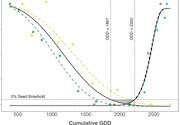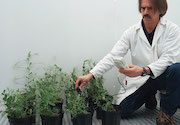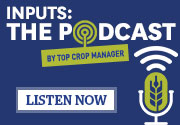| |
| |
 |
 |
| |
 |
|
@{mv_date_MMM d, yyyy}@ |
|
| |
The report, which provides an annual look at the regional land value trends across Canada, shows farmland values continued to rise despite last year’s challenges, including extreme weather and supply chain disruptions.
» Read more...
Oil and food prices are rising because of Russia’s invasion of Ukraine, and so are the prices of fertilizer. Those increased prices could have dire effects, including malnutrition, said University of Guelph’s Manish Raizada.
» Read more...
The southwestern Ontario farmer, who grows corn, soybeans, wheat, sugar beets and sunflowers, and finishes hogs, has been looking for ways to reduce tillage and feed the soil’s biology for close to 40 years.
» Read more...
|
| |
 |
 |
| |
|
| |

Sleep well knowing new Corvus™ herbicide is helping keep your corn weed free. Corvus provides outstanding control of a broad spectrum of broadleaf and grass weeds including glyphosate-resistant biotypes. Flexibility in application timing, including pre-emerge, pre-plant incorporated, and early post-emerge (2-leaf) allows you to apply at the time you want, the way you want, while precisely targeting the weeds you need to control. Plus, Corvus can be tank mixed with a variety of herbicides including Roundup Xtend ® with VaporGrip ® technology, XtendiMax ® with VaporGrip ® technology and atrazine. Give the crop you love a great start and a great harvest potential.
» Get the facts |
| |
|
| |
 Weed control has typically focused on preventing yield loss with the side benefit of controlling weed seed return to the seedbank. New research led by research scientist Charles Geddes at AAFC-Lethbridge and Adam Davis at the University of Illinois, proposes to turn that approach on its head by developing an understanding of when weed control is critical to prevent the return of weed seeds to the seedbank.
» Learn more...
Weed control has typically focused on preventing yield loss with the side benefit of controlling weed seed return to the seedbank. New research led by research scientist Charles Geddes at AAFC-Lethbridge and Adam Davis at the University of Illinois, proposes to turn that approach on its head by developing an understanding of when weed control is critical to prevent the return of weed seeds to the seedbank.
» Learn more... |
| |
 A multitude of stresses ranging from disease to drought can have devastating impacts on crop yields. AAFC pulse crop physiologist Ravinder Goyal decided to “think alternatively” to find a way to improve the ability of pulses to defend themselves against such stresses. Since growers already apply inoculants of rhizobial bacteria to their pulse crops, he wondered if they could take on another task.
» Learn more...
A multitude of stresses ranging from disease to drought can have devastating impacts on crop yields. AAFC pulse crop physiologist Ravinder Goyal decided to “think alternatively” to find a way to improve the ability of pulses to defend themselves against such stresses. Since growers already apply inoculants of rhizobial bacteria to their pulse crops, he wondered if they could take on another task.
» Learn more... |
| |
 |
 |
| |
|
| |
 On a global scale, nutrient deficiency is a huge driver of yield gap in wheat production, but other factors – like access to fertilizer and weather conditions – vary depending on region. In this episode of Inputs, Aiden Sanden, a University of Saskatchewan graduate student, shares details of his studies on mitigating the wheat yield gap. How does the optimal level of nitrogen relate to what producers are actually using and how does it relate to the yield gap?
» Listen now
On a global scale, nutrient deficiency is a huge driver of yield gap in wheat production, but other factors – like access to fertilizer and weather conditions – vary depending on region. In this episode of Inputs, Aiden Sanden, a University of Saskatchewan graduate student, shares details of his studies on mitigating the wheat yield gap. How does the optimal level of nitrogen relate to what producers are actually using and how does it relate to the yield gap?
» Listen now |
| |
|
| |
|
|
| |
| |










